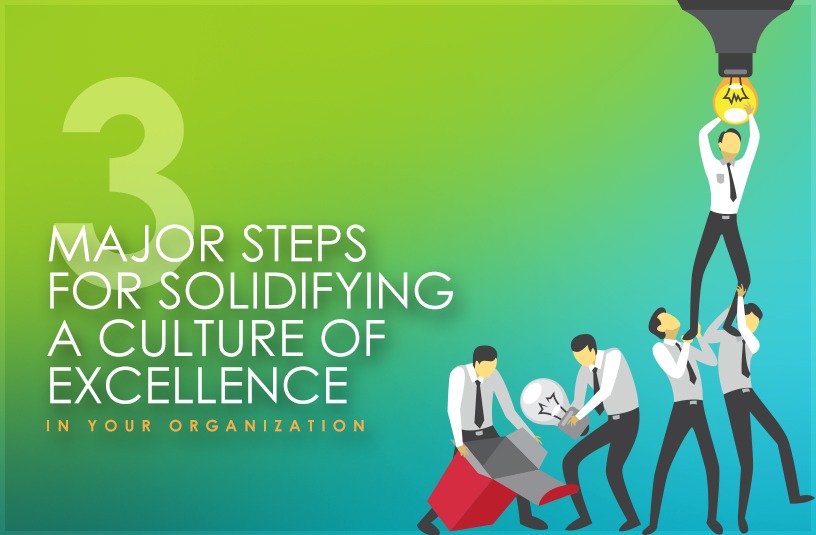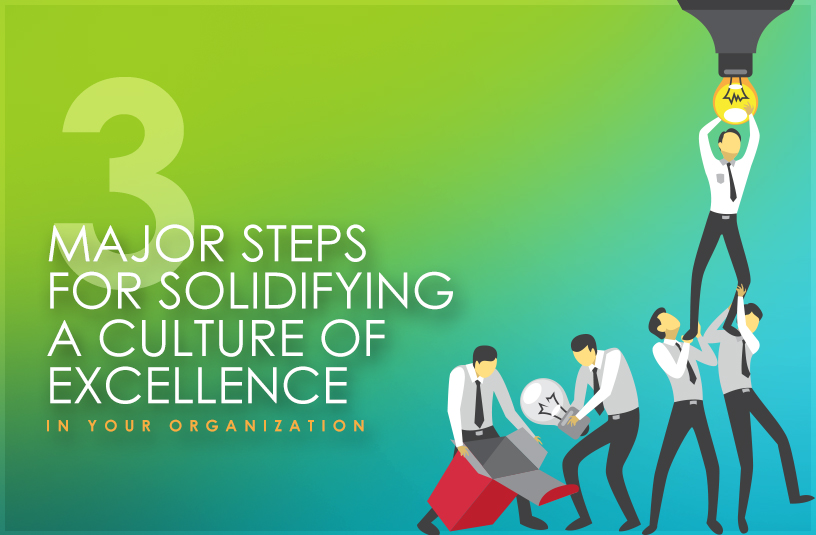3 Major Steps for Building a Culture of Excellence in Your Organization
Building a culture of excellence within an organization starts with introspection and a strategic approach. Identifying pain points and understanding the impact of organizational actions is essential for long-term success.
Causal Analysis: The Foundation for Building a Culture of Excellence
Step 1 – Identify Your Biggest Pain Points Using Causal Analysis
By performing an Apparent Cause or Root Cause Analysis you can effectively identify the precious few items to focus on that are plaguing your organization. Conducting a sound analysis helps to save both resources and man-hours by dialing in on what’s driving your symptoms.
It’s quite easy to make assumptions that you know what the problem actually is without performing an analysis, however, it’s best to remove all assumptions from the equation and allow the tools and processes to perform the heavy lifting for you.
It might surprise you that by performing an analysis without discrimination or bias you come to determine your real problems are something quite different than what you first imagined.
And remember, the only way to develop effective corrective actions for any error or event is by performing a complete causal analysis that actually identifies the issues that drive them.
By zeroing in on the real apparent and root causes you also eliminate subsequent decline in long-term cyclic performance.
One other area to pay close attention to in your corrective action program is the organizational and programmatic (O&P) causes.
It’s very simple to look at an event and blame an individual assuming an individual triggered the event (in fact this is the knee-jerk response in many instances).
However, rarely does this form of disciplinary action identify and solve the underlying long term issues that likely caused the individual to act in an undesirable manner in the first place.
By performing a strong O&P analysis you will likely find fundamental weaknesses that you otherwise would not have noticed. Remember…people come to work every day wanting to do the right thing. Rarely is there ever an individual that comes to work under the mindset of “what can I mess up today?”
It’s proven that around 80% of your issues are likely to be a mix of organizational and programmatic issues, so by training up your analysts to conduct strong O&Ps you can dial in on and put in place corrective actions systematically that will help you sustain long term high performance in your industry.

Implementing a Model of Excellence: Tailoring to Your Organization
Step 2 – Develop and/or Implement a Proven Model of Excellence
There are no one-size-fits-all models out there in the corporate marketplace. Central to building a culture of excellence, Step 2 demands a custom-fit model of excellence, grounded in a thorough analysis that reflects your unique organizational landscape.
Anyone that says so does not fully appreciate or understand the complexity and individual nature of one organization compared to another.
There are a number of factors that determine the culture of excellence you may want to introduce into an organization. Things as simple as branding and the niche/industry itself play a role in determining the culture you’re interested in creating; one that’s congruent with your company’s mission, vision, and values.
Additionally, tailoring a cultural excellence model to your company can be done only by having a sound causal analysis to back the values you build into that very model.
An excellence model is only as good as the tools that are in place to implement it. It is critical to turn policy into real action and behavior.
And this is where most organizations struggle to implement: change management.
Sound change management is where the rubber meets the road when it comes to implementation of a new model.
A truly strong change management plan will analyze the needs of the key stakeholders, determine communication methods, identify training needs across departments, and establish ways to measure the effectiveness of your action plan.
Poor change management will likely have the opposite impact.
You can have the best cultural excellence model in the world and best procedures in the world, but without a plan to back their rollout and execution it’s unlikely true change will ever occur in the organization.
Step 3 – Strengthen Human Resources and Organizational Effectiveness Functions
Organizations who are successful at establishing and maintaining a culture of excellence have strong processes in leadership development, succession planning, and knowledge management.
Again, Step 1, a sound analysis, is critical to understanding where your specific weaknesses are in these areas. It is important to develop today’s leaders in your organization while looking ahead to your future leaders.
Begin developing them now.
Your most important asset is your people.
By ensuring your organization has the correct level of proficiency and knowledge to complete mission-critical tasks is an important function in ensuring business plans are also met.
This also allows your organization to have the resiliency to respond to unforeseen threats that occur.
And what about succession planning?
One of the most chaotic positions you can allow yourself to be in is one where a key department is set to experience high turnover and it was predictable well in advance.
An example of this might be an aging workforce where 50% of the department is approaching retirement in the next 3 years.
If it takes a year to train and replace personnel in a department like this then it’s a good idea to begin onboarding people knowing that this key timeframe is fast approaching.
Allow the experts that are approaching retirement to help train and mentor your new people.
For more information for how Accelerant can help you like we’ve helped others in establishing a culture of excellence, Click Here!







Billy Mack
January 9, 2019Too many times Step 1 is underappreciated for high risk organizational changes. Doing the right level of analysis proportional to the risk it a critical step.
Jason Smith
January 9, 2019Good point! Thanks!
Henry Joyce
January 10, 2019Effective causal analysis is key, but that can be the hardest part to do effectively. In too many cases, the organization has declined in the first place by losing the ability to be self critical, creating an environment where asking the hard questions becomes difficult.
Jim Raleigh
February 4, 2023… Additionally, often times senior management tries to steer the RCE Team towards an “a priori” (predetermined) Root Cause and fixes without letting the team follow the RCE methodology and come to their own independent conclusions and corrective actions.
Billy Mack
January 10, 2019@Henry, So true. In that scenario it usually takes a third-party to snap out of the cycle. Sometimes, that third-party is a regulator. I try to keep in touch with people that are willing to help me and my organization stay out of complacency! Gotta keep it mixed up!
Ashley Royal
January 23, 2019Precious resources require precise solutions. Rigorous causal analysis that determines the right solution is integral to smart business.